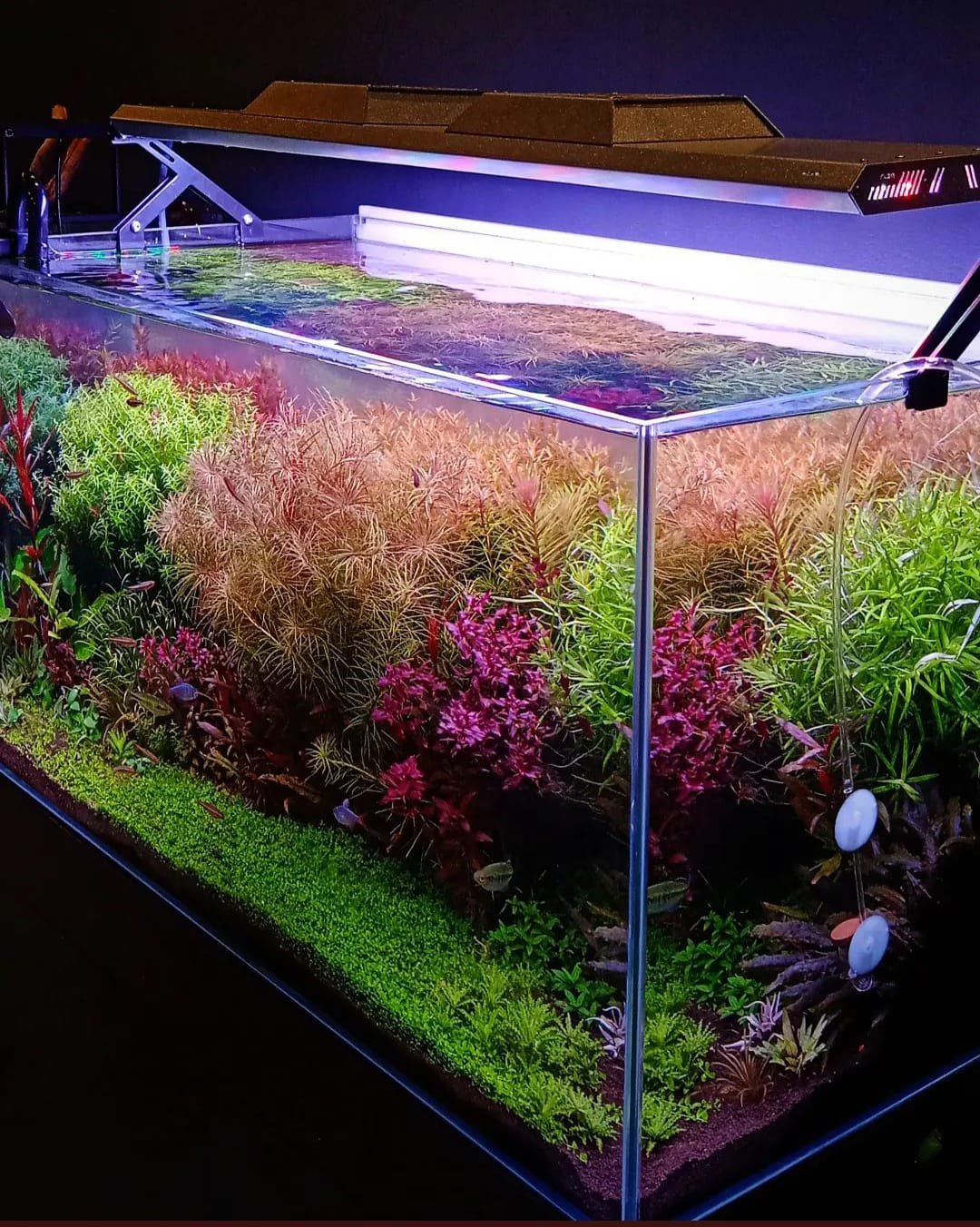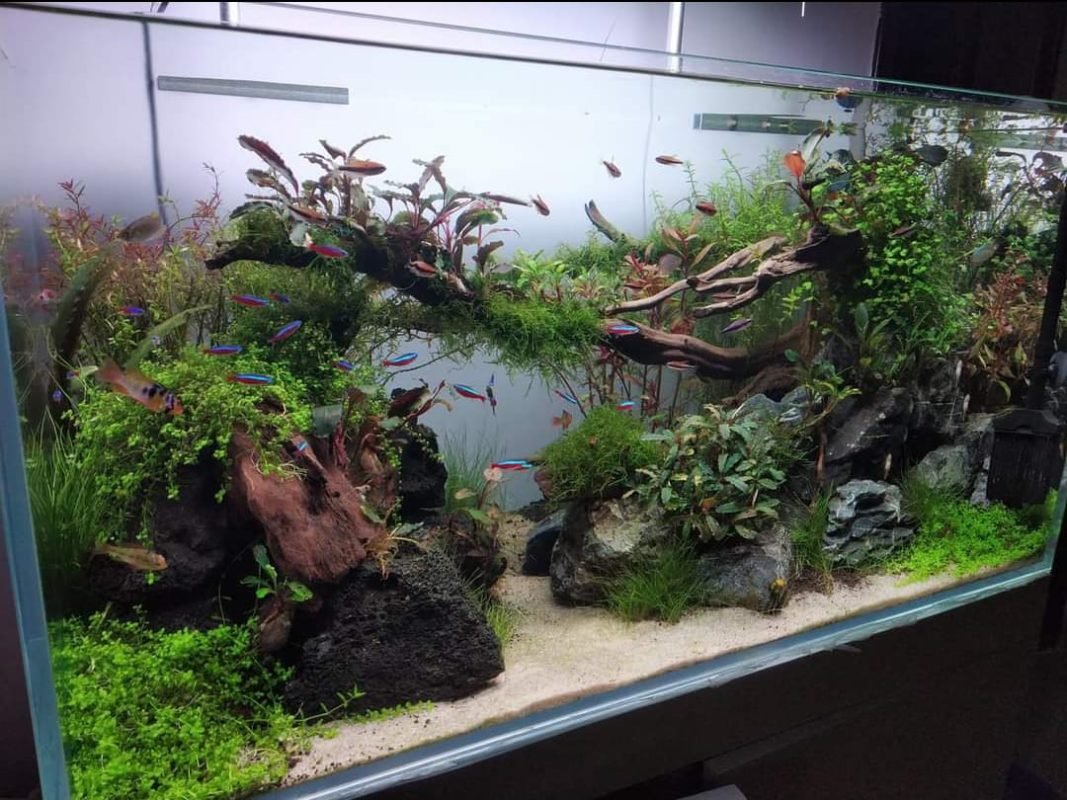As discussed in the blog Aqua-scaping Styles, The Dutch focuses on highlighting the flora of the Aquatic World. It is one of the oldest styles of scaping relying on various fast-growing plant without compromising on the beauty. The texture, colour and shapes of plants are used in the play.
If you want to try your hand on this style; here’s what you need to know
What tank to pick?
This style adapts any tank size. A tall tank would pave way for high plants; although you might find them harder to light. We propose you use a long tank and pick plants that don’t grow too tall or plant the tall ones at the back.
What light to pick?
High-tech WRGB lights are recommended, since they will help flaunt your scape. No matter the light, ensure you are in a position to adjust/control the lighting since too much of light could lead to algae bloom. To avoid this, either use a dimmer or use auto lights or you can even adjust the height of your light fixture. Some lights come with an option to power them from your phone. To view our collection, click here.
The Soil, Substrate & Fertilizers?
Seeing that the Dutch style banks on plants, you can find yourself amidst of pruning, trimming, replanting, uprooting from time to time. Hence a good soil/substrate that does not threaten your water system is a must. A routine fertiliser (regular dose of iron and minerals) is recommended for plants that flourish under them; most carpeting plants enjoy a good fertilization to spread evenly at a quicker rate. Click here to browse through our options of soils, substrates and fertilisers.
#FUN FACT- Raised layers or terraces are known as Dutch Street
Co2 Injection is a must if:
- You have plants that rely on them
- You want the colour of your plants to POP
- You want a full carpet
- You want your plants to grow vigorously and to their full potential
(Ideal range 15-20ppm) ***
***It is of high importance that you learn to administer CO2 and distribute it evenly across the whole tank. Take a look at our Co2 system here.
Filter System:
An even circulation of nutrients and CO2 is the sign of a good filtration. A mini submergible pump comes to the aid of main filter, should the filter fail to provide for the whole tank. Focus on getting a filter that gives 5 to 10 times the water turnover rate. For instance; if you have a 10-gallon tank, your filter system should have a turn over rate of 50gph (x5) 100gph (x10). Click here to browse through our range of filters.
#BWA tip: To bring about the beauty of the Dutch, hide all equipment used.
Hardscape?
The Dutch does not rely on hardscapes; hence don’t be surprised if you don’t see rocks, stones or driftwoods in such tanks.
Selection of Plants:
Plants are the central character of this style of scaping; hence a full background work is a must when you start to build your Dutch style.
- For carpet/foreground– Dwarf hairgrass, dwarf sagittaria, dwarf baby tears, monte-carlo, glosso, riccia fluitans, hydrocotyle tripartite, pearlweed, Eriocaulon etc
- Midground plants– Bacopa caroliniana, Bacopa Monnieri, Ludwigia glandulosa, rotala hra, syngonanthus sp belem, tonina sp belem, tonina fluviatilis, blyxa japonica etc
- Background plants– Ludwigia pantanal, pogostemon erectus, pogostemon stellata, limnophila aromatica, limnophila hippuridoides, rotala colorata, myriophyllum mattogrossense etc
Fishes?
Fishes are used in Dutch aqua-scaping. There are hobbyists those prefer no fish so as to highlight the floral beauty. A school of fishes such as harlequin rasbora, ember tetra, rummy-nose tetra, cardinal or neon tetras are preferred. Should you wish to include snail or shrimps, consider Neritidae or the ramshorn* snail, Caridina multidentate or Neocaridina davidi. Do not include shrimps if you have omnivorous fish.
*They tend to reproduce at a fast rate if you overfeed them
The key to master this style is to work through the chaos; you will have plants with minds of their own, some maybe fast growing, some slow, some shed while the other thrives, some pop their colour. It’s the harmony of the plants that bring together the Dutch. Hence you should always be ready for a weekly clean up of debris, pruning and replanting, cleaning the filters etc.
Have more questions?? Leave us a comment or tell us how you mastered your Dutch Style
Remya Jkumar is Blogger by Interest, Chef by choice, Trained Dancer by Art.



